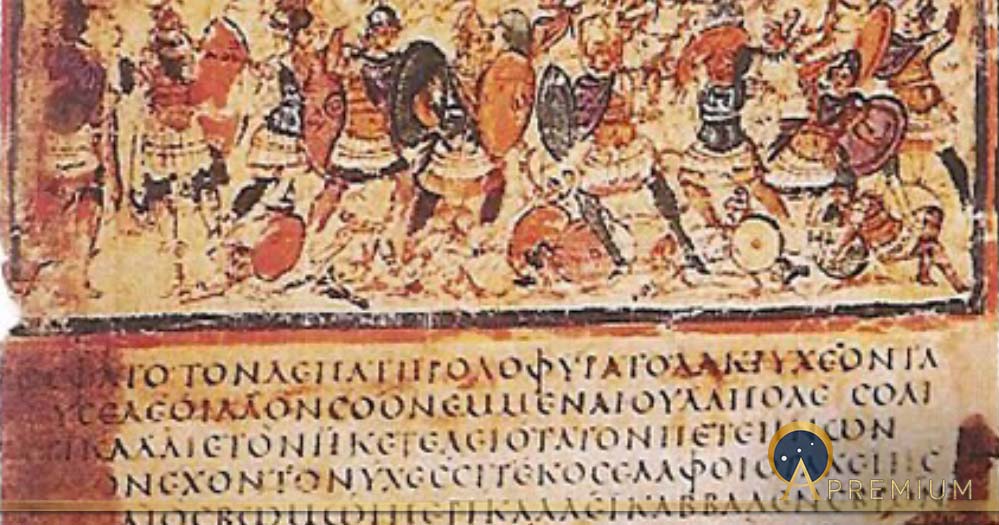The Iliad: Overlapping Mycenaean Bronze Age And Dark Age Allegories
Known as the “Age of Heroes,” the Mycenaean civilization (1600-1100 BC) was immortalized in the Homeric epics by such noteworthy characters as the imperious commander-in-chief “king of men” Agamemnon, the “swift-footed” war hero and demi-god, Achilles, and the enchanting “queen among women,” Helen herself. The glittering gold glory of the late Bronze Age is known for its Cyclopean masonry, palatial states, reinforced bridges, fortified citadels, and giants with larger-than-life personas. Since the Mycenaeans could not speak for themselves, it has long been supposed that Homer (or the poets known as Homer) spoke for them. At last, when Homer put stylus to papyrus, he recorded for posterity a time when heroes roamed the earth side by side with the gods, and the resplendent Mycenaean civilization was still dominant.

Wooden board (writing tablet) inscribed in Greek in ink with lines 468-473, Book I of Homer's Iliad, from Egypt, (400-500 AD) British Museum (Osama Shukir Muhammed Amin/ CC BY-SA 4.0)
Nevertheless, a space of 500 years separates Homer’s time (eighth-century BC) from the last vestiges of the late Bronze Age powerhouse. Is it appropriate to assume that the Homeric epics were reflective of the Mycenaean era exclusively? After all, 500 years is no small matter. It would be as if events in a hypothetical prehistoric civilization, from 500 years ago, could be accurately reported by historians today. The preponderance of the 500-year interval is the blank slate otherwise known as the Greek Dark Age (1100-750 BC), an era that has often been easily glossed over by historians throughout the ages.
However, extensive literary analysis conducted within the last one hundred years has determined that while there are Mycenaean elements within the Homeric epics, there are elements that relate to the Greek Dark Age as well, a time which would have been more recent to the memory of those living in the Archaic Period of ancient Greece (750-480 BC). There were, after all, two prehistoric periods that preceded the composition of the Homeric epics from which the oral poets could draw. There exist some literary contradictions in the epics as they relate to the Mycenaeans, leading to the question: How dark was the Greek Dark Age?
Background to the Mycenaeans
In the quest for historical accuracy, some background on the Mycenaeans is essential. In the 17th century BC, these seafaring hyper-militant warriors conquered the Greek mainland from its earlier inhabitants.
Like this Preview and want to read on? You can! JOIN US THERE ( with easy, instant access ) and see what you’re missing!! All Premium articles are available in full, with immediate access.
For the price of a cup of coffee, you get this and all the other great benefits at Ancient Origins Premium. And - each time you support AO Premium, you support independent thought and writing.
Mary Naples is the author of The Cult of the Captured Bride. With an emphasis in Women’s Studies, she earned an M.A. in Humanities from Dominican University of California. Her deep love of the classical world is reflected in her writing which explores women’s narratives ranging from the ancient Greek and Roman worlds into the Byzantine era and even into ancient Israel and Judea. Visit her site at www.femminaclassica.com
Top Image: Iliad, Book VIII, lines 245–53, Greek manuscript, late fifth, early sixth centuries AD. (Public Domain)
By: Mary Naples


















